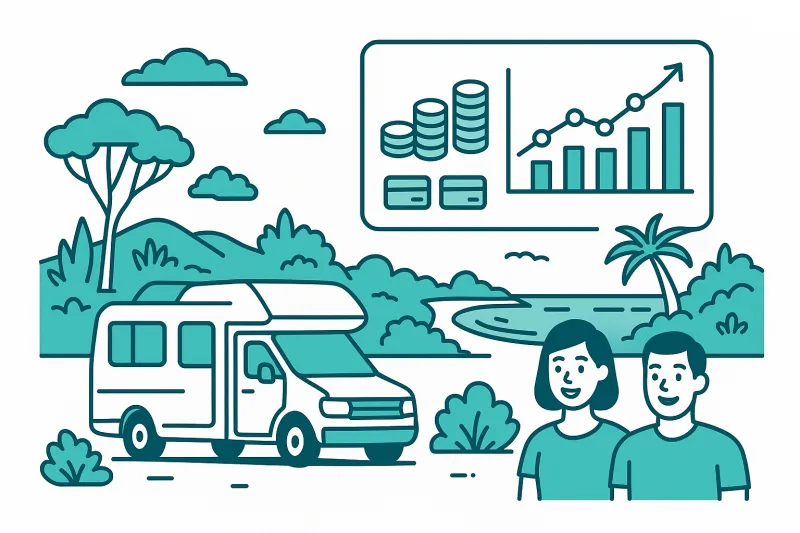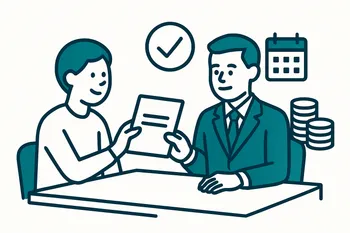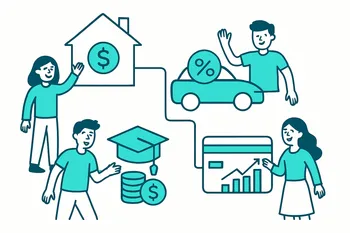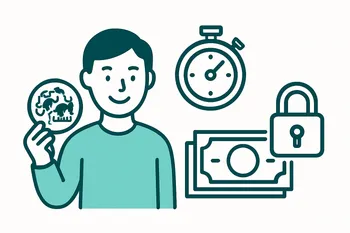Financing Your Dream Camper: A Complete Guide
- Personal Finance
- 04 Mins read

Financing Your Dream Camper: A Complete Guide
Understanding Your Budget
Before you dive into the world of financing a camper, it’s crucial to understand your budget. A camper isn’t just a vehicle; it’s an investment in your adventures. Think about how much you can comfortably afford to spend without straining your finances.
Assess Your Financial Situation
Start by examining your income, expenses, and savings. Here’s a simple way to break it down:
- Income: Consider your monthly take-home pay.
- Expenses: List all monthly expenses, including bills, groceries, and savings.
- Savings & Emergency Fund: Make sure you have a buffer for unexpected costs.
By calculating what’s left over, you can determine how much flexibility you have for a monthly payment on a camper.
Types of Campers and Costs
Not all campers are created equal. The type you choose will significantly influence the price. Here are some common options:
- Pop-Up Campers: Affordable and easy to tow, typically costing between $10,000 to $20,000.
- Travel Trailers: These can range from $15,000 to $50,000, depending on features and size.
- Motorhomes: These serve as both vehicle and living space, starting around $50,000 and going well over $200,000 for luxury models.
Real-Life Example
Imagine you’re interested in a travel trailer priced at $30,000. If you plan to finance it over five years with an interest rate of 6%, your monthly payment would be around $580. That’s a manageable amount for many, but you need to ensure it fits within your budget.
Financing Options Overview
Now that you know your budget and what type of camper you're interested in, it’s time to explore financing options. Here’s a breakdown of your choices.
Personal Loans
A personal loan is a common avenue for financing a camper. These loans can be secured (backed by your assets) or unsecured.
- Pros: Often have lower interest rates than credit cards and flexible terms.
- Cons: Unsecured loans may come with higher interest rates if your credit isn’t great.
Dealer Financing
Many dealerships offer financing plans directly, making it convenient to purchase your camper and secure financing in one go.
- Pros: Quick and easy; many dealers offer promotions such as zero percent interest.
- Cons: Rates can sometimes be higher than what you’d find through a bank or credit union.
Credit Unions vs. Banks
Both credit unions and banks offer camper loans. Credit unions generally have lower interest rates and more personalized service.
- Credit Unions: These member-owned institutions often offer better terms. If you have a good credit history, this is worth exploring.
- Banks: Larger institutions may provide more options but can have stricter requirements.
Comparison of Rates
Before making a decision, shop around. Rates can vary significantly. For instance:
- Credit Union Rate: 5%
- Bank Rate: 7%
- Dealer Rate: 6.5%
Even a 2% difference can save you thousands over the life of the loan.
Flexible Payment Plans
Flexible payment plans can ease the burden of large loans. Many lenders offer options such as:
- Deferred Payments: Start paying after several months.
- Interest-Only Payments: Lower payments initially by only paying interest for a set time.
- Extended Terms: Lower your monthly payments by stretching the loan term, though this can mean paying more interest overall.
Case Study
Let’s look at Emily, who wants a $25,000 travel trailer. She finds a loan with a 7% interest rate for 10 years. If she opts for a traditional plan, her payment is about $290 monthly. If she chooses an interest-only period for the first year, she starts with only $145 monthly. The catch? She’ll have higher payments later and total interest paid will increase.
Expert Tips for Success
Financing is often a labyrinth of options. Here are some tips to help guide you through.
Know Your Credit Score
Your credit score plays a huge role in determining your financing options. A higher score usually means better rates. Checking your score is easy and often free.
Save for a Down Payment
A larger down payment can significantly decrease your overall loan amount and monthly payments. Aim for at least 10% of the camper’s price.
Don’t Rush
Take your time to research and compare offers. Lenders may have different terms that could work better for you.
Read the Fine Print
Always read the contract carefully. Look out for hidden fees and understand the terms of payment.
Avoiding Common Pitfalls
Even savvy buyers can encounter pitfalls when financing their camper. Be mindful of these common mistakes.
Overextending Yourself
It’s easy to get swept away in excitement. However, ensure you don’t bite off more than you can chew. Stick to your budget.
Ignoring Additional Costs
Owning a camper means additional costs such as insurance, maintenance, and storage. Account for these in your budget.
Failing to Shop Around
Never settle for the first option. Compare multiple lenders to find the best deal. Utilize online comparison tools and talk to peers for recommendations.
Conclusion
Financing your dream camper requires careful planning and consideration. By understanding your budget, exploring different financing options, and taking the time to research, you’ll be well on your way to hitting the open road. Whether you’re a first-time buyer or looking to upgrade, approaching the process with knowledge and caution will set you up for a fulfilling camping experience.
"The journey is the destination." – Whether it’s your weekend getaway or a lengthy road trip, every moment in your camper can become a cherished memory. Enjoy the adventure!



